The Alluring Beauty and Rarity of Conch Pearls: An Overview

A conch pearl is a specific kind of pearl that develops within the shell of a queen conch, a giant marine snail found in the Gulf of Mexico, the warm seas of the Caribbean, and other tropical areas. They are a natural result generated from the conch's reproductive system and are far rarer than regular pearls created by oysters.
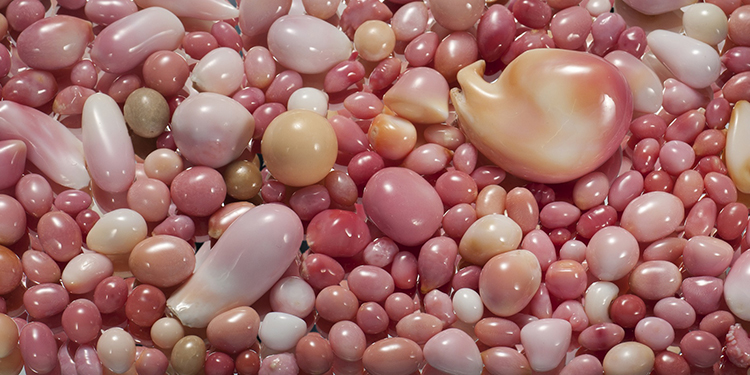
Conch pearls are accessible in a wide range of hues, including brown, white, orange, pink, and even black. Additionally, jewelry enthusiasts and collectors particularly sought them out due to their characteristic flame-like appearance, referred to as chatoyancy.
These pearls are among the most expensive worldwide due to their exclusivity and distinctive beauty. Furthermore, they are in high demand by jewelers, who employ them to make unique pieces that are exquisite and unusual.
Conch pearls are valuable not just for their scarcity and beauty but also because they result from sustainable harvesting methods. Their production process is under strict regulations via stringent rules and conservation initiatives.
What Is a Conch Pearl?
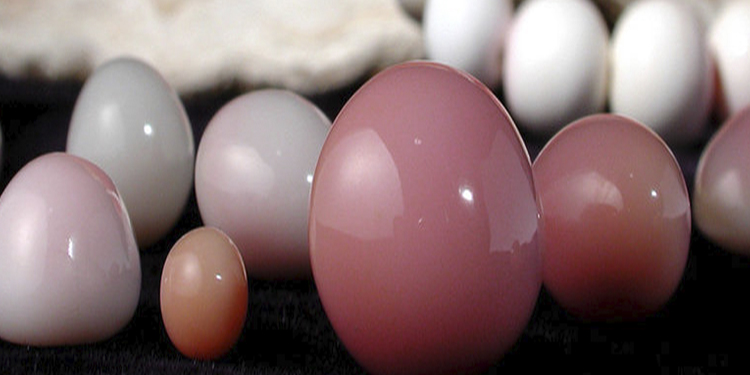
Conch pearls grow within the shell of the queen conch, a large marine snail found in warm environments. The queen conch is a big marine mollusk that may weigh as much as one foot long and typically weighs several pounds.
Over the years, people have harnessed its spiral-shaped, recognizable pink shell as a source of food, as decorative elements, and used it to make musical instruments.
Conch pearls develop when a tiny foreign object—like a parasite or a particle of sand—gets stuck in the mantle tissue of the conch. In response, the conch secretes nacre all around the particle, forming a pearl. However, unlike oysters that produce pearls fast, conchs might take years or even decades to generate a single pearl.
These pearls have a long history, dating to when native communities in Central America and the Caribbean used them as ornaments. They were originally brought to Europe by European travelers and traders in the sixteenth and seventeenth centuries when monarchs and the higher classes treasured them greatly.
Conch pearls were highly sought-after for usage in jewelry throughout the nineteenth and early twentieth centuries, especially in the Art Nouveau and Art Deco fashions. Yet by the middle of the 20th century, habitat loss and overfishing reduced the queen conch population massively, causing a fall in conch pearl output.
Physical Characteristics of Conch Pearls
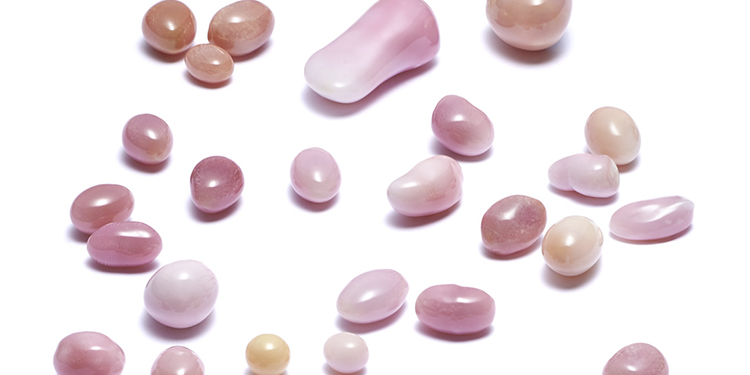
Jewelry aficionados and collectors highly appreciate conch pearls due to their unique aesthetic qualities. Some of their exquisite physical features include:
Color
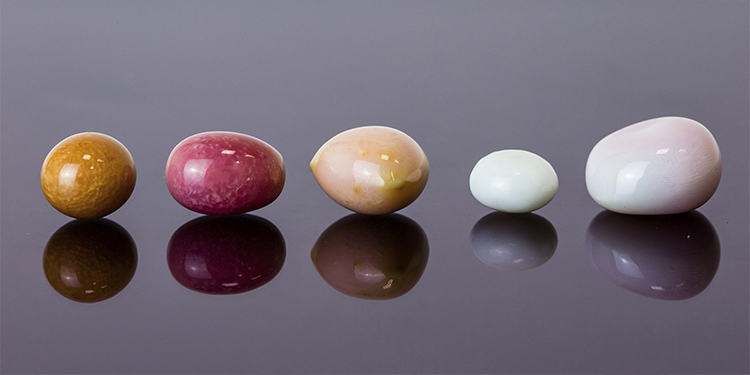
They are accessible in an array of colors, notably orange, black, white, pink, and brown. However, some pearls even have a combination of different shades. The most sought-after conch pearls are deep pink in hue, brought on by the conch's diet rich in carotenoid pigments.
Chatoyancy
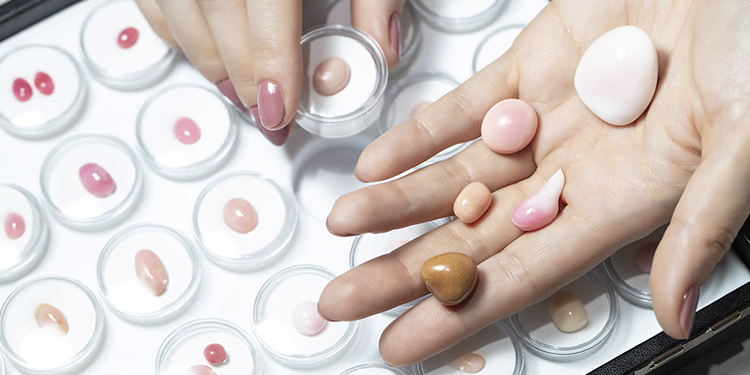
Chatoyancy, a distinctive flame-like pattern found in conch pearls, results from the synchronization of tiny crystals on the surface of the pearl. This pattern gives the pearl a characteristic shimmering appearance when seen under various lighting conditions.
Size
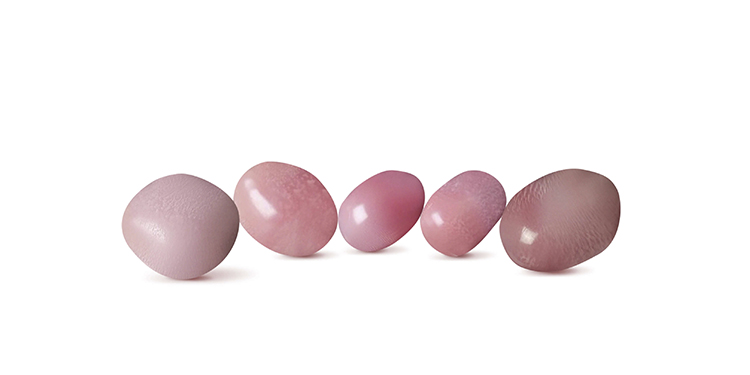
Conch pearls are normally tiny, with the biggest seldom topping 15mm in size. Their typical diameter ranges from 2 to 10mm.
Surface
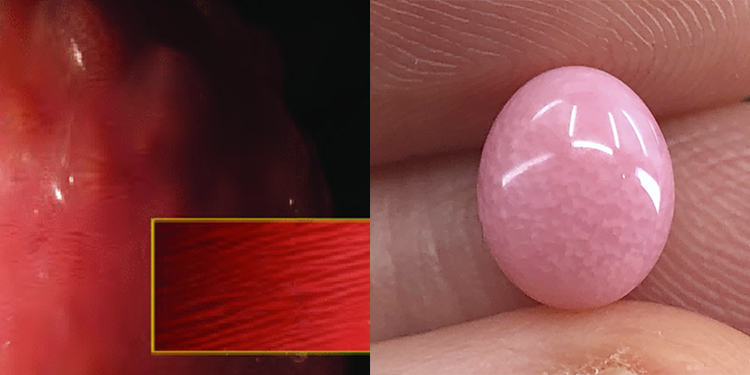
Conch pearls are more prone to scratches and other damage since their surface is relatively delicate compared to different varieties of pearls. Nevertheless, because of how easily they can be carved and shaped, they are used in decorative sculptures and other creative endeavors.
Uses of Conch Pearls

The remarkable beauty and exclusivity of conch pearls make them highly prized and sought after. Those who value their inherent beauty and elegance have made them renowned due to their numerous uses.
There are several uses for conch pearls. Some of these include;
Jewelry
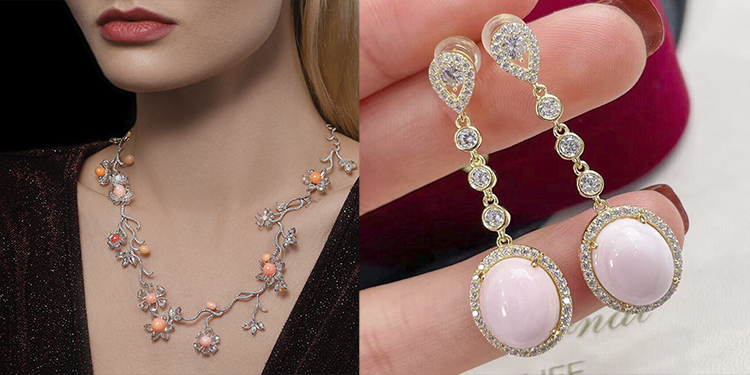
Earrings, bracelets, necklaces, rings, and other pieces of fine jewelry frequently use conch pearls. These are a preferred option for bridal and exceptional event jewelry due to their organic white, peach, and pink tones.
Collectibles
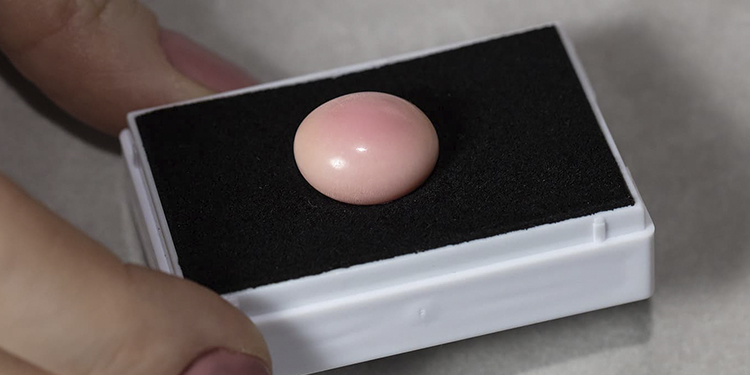
Conch pearls are extremely rare and in great demand among conch pearl aficionados and pearl collectors worldwide due to their scarcity.
Investment

Conch pearls are rare and in great demand, making them a lucrative investment. Their worth has been consistent in the past, and they will keep improving with time.
How to Identify a Conch Pearl
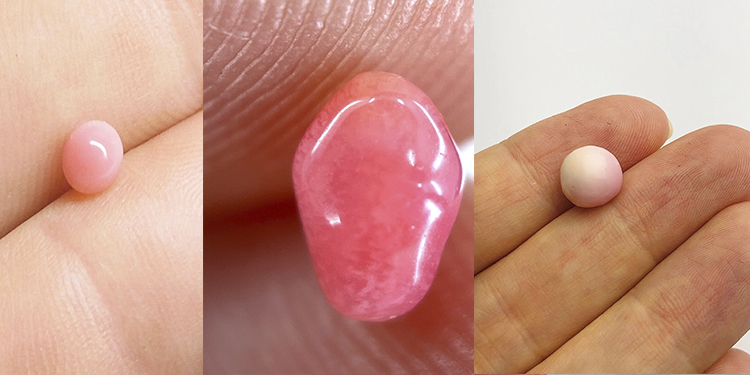
Conch pearls can be difficult to distinguish from other forms of pearls or gemstones, making identification difficult. Nonetheless, there are a few distinguishing features to look for that might assist in determining an authentic conch pearl:
Shape
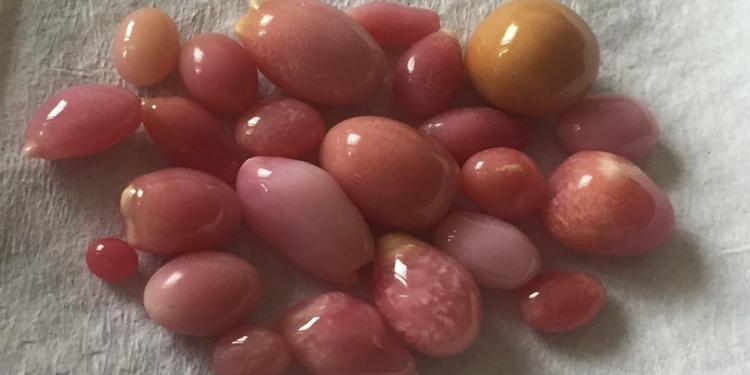
Conch pearls often have tiny, atypical forms, while some pearls have extended or baroque shapes.
Surface Texture

When handled, conch pearls have quite a tactile character due to their somewhat grainy or rough surface texture.
Luster
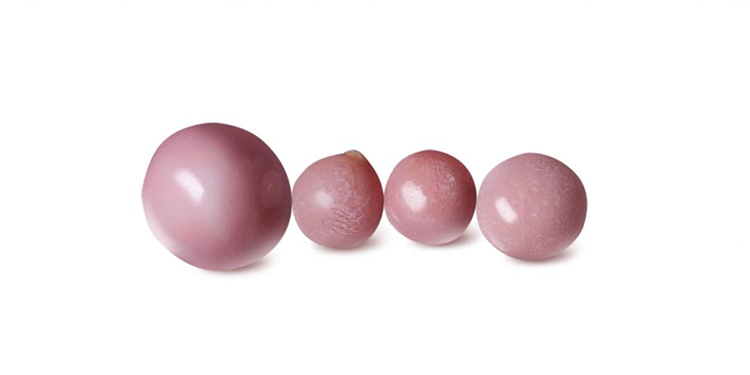
Conch pearls have a silky, satiny shine that, when exposed to light, gives them a beautiful glow.
Chatoyancy
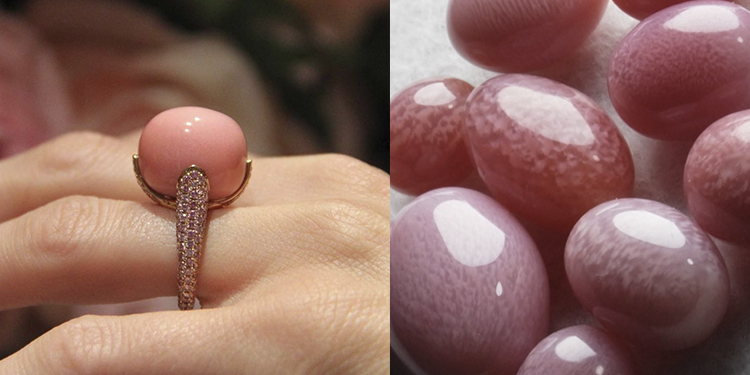
Conch pearls exhibit chatoyancy, a special flame-like pattern that makes them sparkle and change colors when examined from various angles.
The Differences Between Oyster Pearls and Couch Pearls
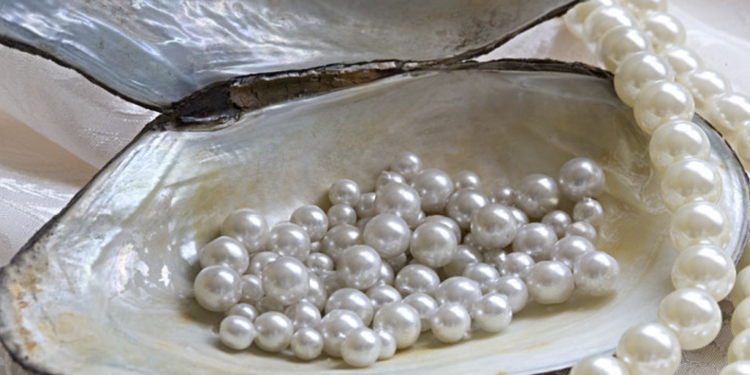
Oyster and conch pearls differ significantly in size, color, texture, and price, despite both being highly desirable for their elegance and distinctiveness. Furthermore, these pearls differ from each other in several ways, including:
Formation
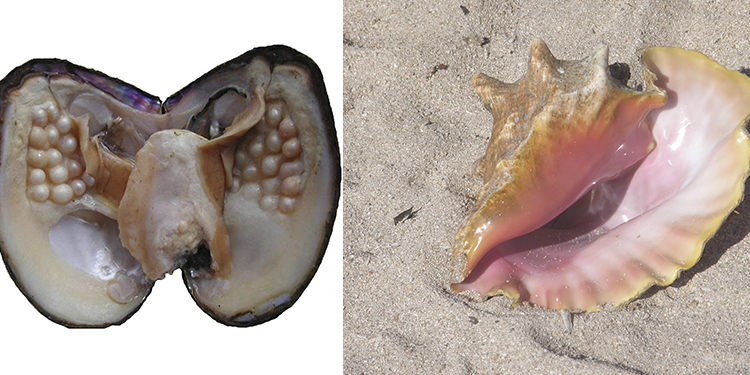
Conch pearls develop within the mantle tissue of the queen conch shells, whilst oyster pearls develop inside the tissue of oysters.
Rarity

Compared to oyster pearls, conch pearls are significantly more uncommon; just one in about 10,000 queen conch shells will yield a pearl. Due to their exclusivity, conch pearls are substantially more expensive than oyster pearls.
Surface Texture
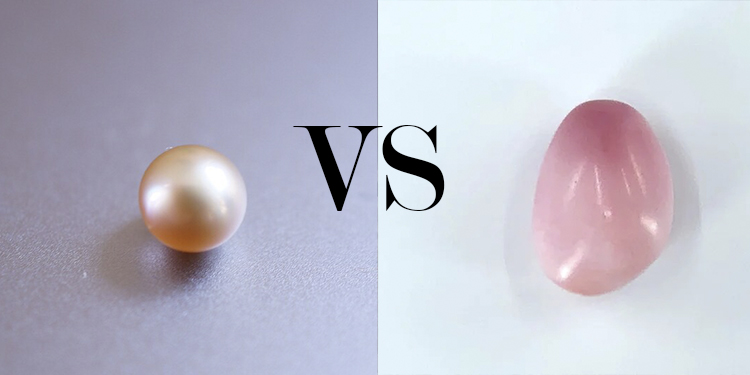
Conch pearls have a characteristic tactile feel and a surface texture that is somewhat rougher than oyster pearls.
Size
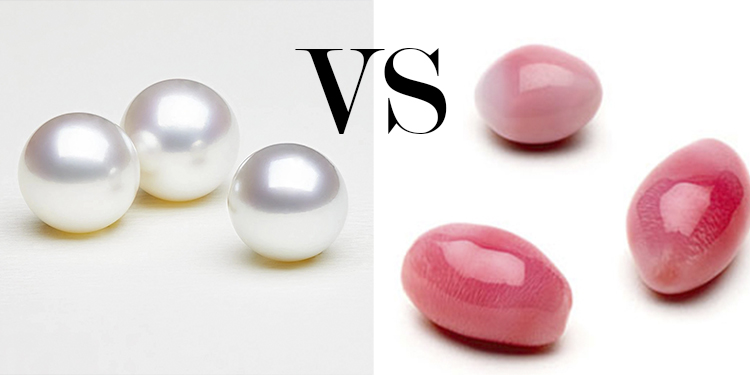
The average oyster pearl is bigger than a conch pearl, and some kinds can reach a diameter of several centimeters. Conversely, conch pearls often have very modest sizes, ranging from two to ten millimeters.
Luster

Conch pearls have a smoother, satiny shine that gives them a mellow glow, whereas oyster pearls often have a high luster.
Color
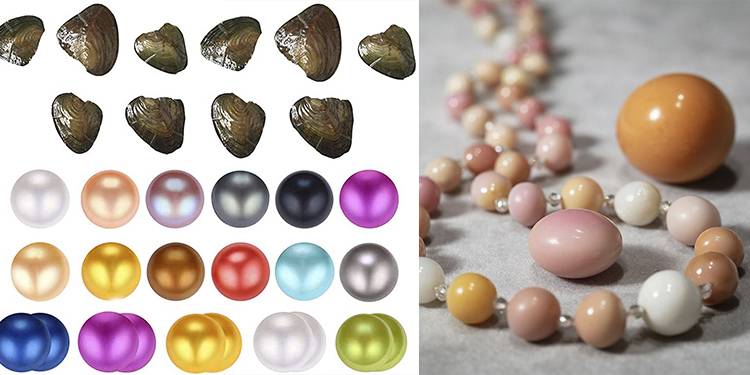
There are many distinct hues of oyster pearls, which include blue, white, pink, black, pink, and yellow. Contrarily, conch pearls are often pink; however, you may also discover them in white, orange, black, brown, and white hues.
Testing Methods for Conch Pearls
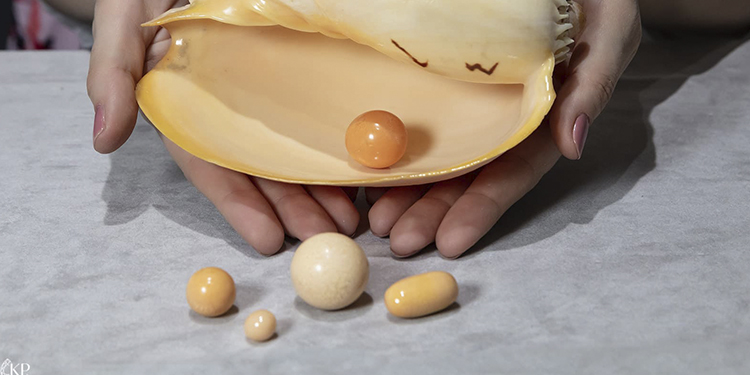
You can identify and authenticate using a variety of testing techniques, such as:
Virtual Assessment

A professional gemologist or jeweler may identify specific physical traits of conch pearls by visual inspection, such as their distinctive flame-like pattern or chatoyancy, surface texture, color, and form.
X-ray Diffraction
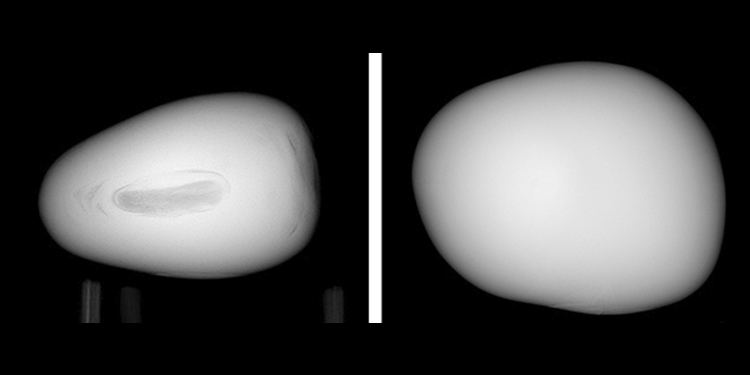
You can distinguish the authenticity of a conch pearl through X-ray diffraction analysis of the crystalline composition of the pearl.
Infrared Spectroscopy
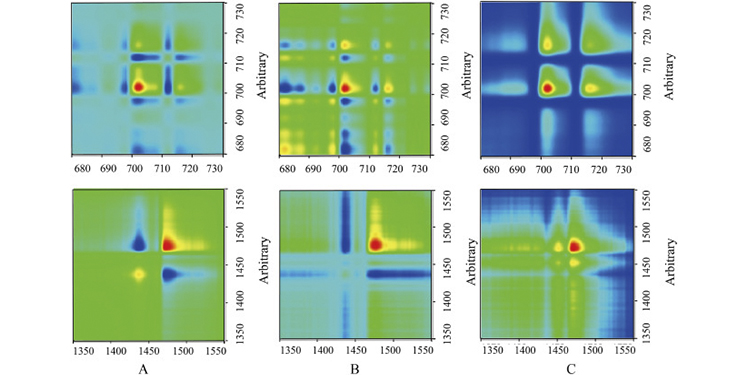
A detailed way to test for conch pearls is by examining the chemical makeup using infrared spectroscopy, making it easier to recognize and tell apart from other kinds of pearls or impersonations.
Microscopic Analysis

You can distinguish conch pearls from other varieties of pearls or replicas attributable to microscopic analysis showing their internal structure and peculiarities.
UV Fluorescence
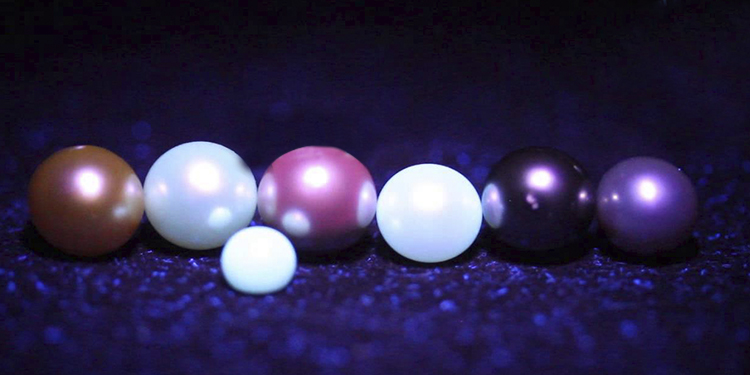
When exposed to specific UV light wavelengths, conch pearls have a characteristic UV fluorescence that you may observe.
Density Measurement
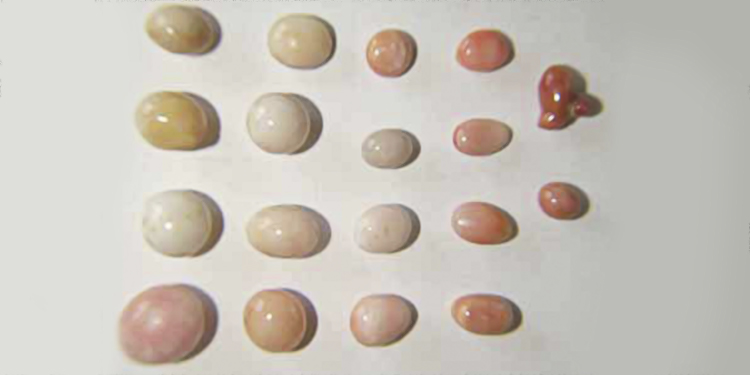
Utilizing a salt water and alcohol solution, you may gauge a conch pearl's density. Since they are denser than the majority of other types of pearls, conch pearls will float in this solution.
Value and Rarity of Conch Pearls
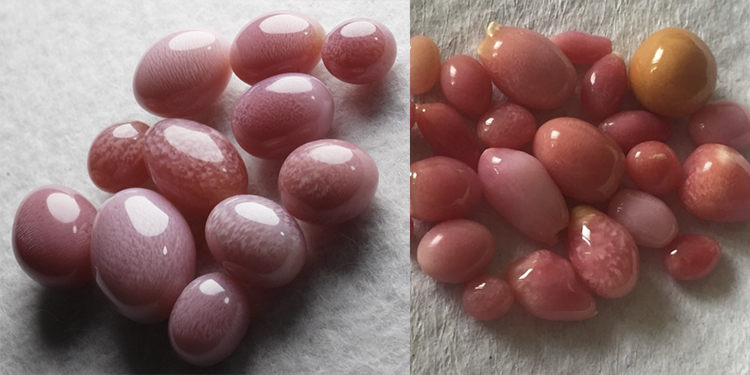
A conch pearl necklace's price can differ significantly based on the pearl's quality, size, design, and color. They are typically more costly and uncommon than other pearl varieties, making conch pearl jewelry highly pricey.
A high-quality conch pearl necklace can cost between a thousand and a hundred thousand dollars. However, it is crucial to remember that prices might fluctuate and alter over time based on several factors.
The following variables can influence the price of conch pearls:
Origin
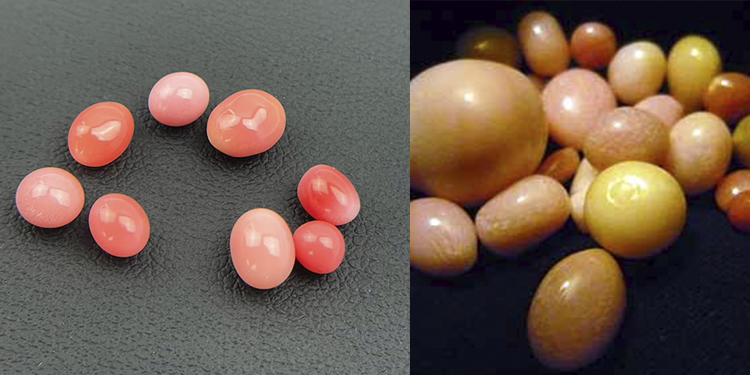
Due to their outstanding quality and scarcity, we regard conch pearls from the Caribbean—specifically those found in the waters of the Dominican Republic and the Bahamas—as being the most valuable.
Color
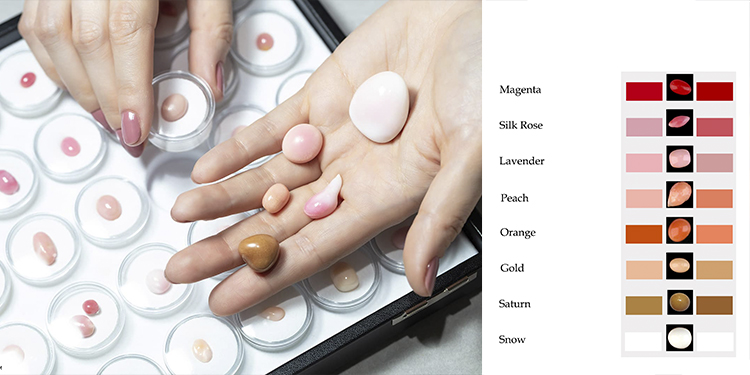
The most expensive conch pearls usually have a vivid, intense pink hue and a high UV fluorescence. Furthermore, the hues white, orange, and brown are also appealing.
Rarity
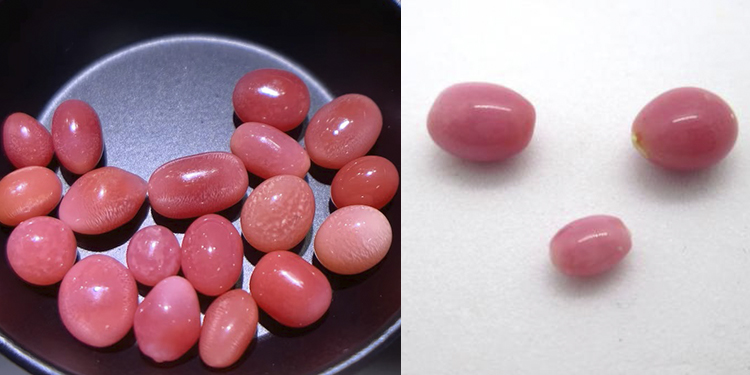
One in 10,000 queen conch shells yields a pearl, making conch pearls significantly rarer than other varieties. Conch pearls are more expensive than other varieties of pearls because of their scarcity.
Size

With dimensions that range from two to ten millimeters, conch pearls are typically tiny. Bigger conch pearls are more uncommon and expensive.
Shape
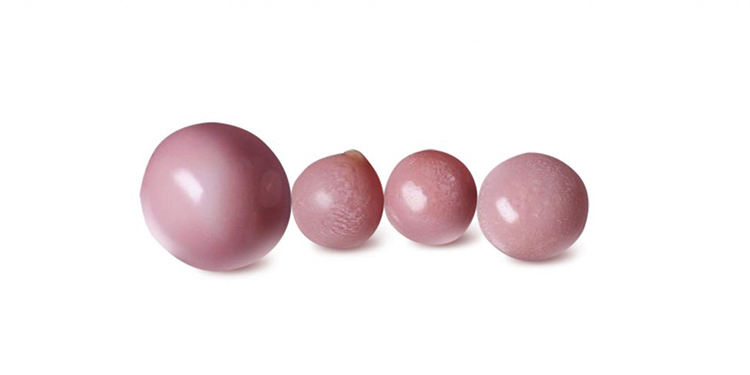
Conch pearls usually have an uneven shape, with those having a round or oval form being more desirable.
Caring for Conch Pearls
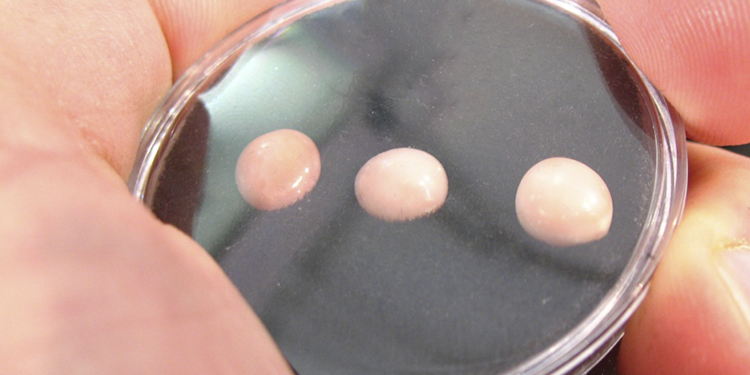
Conch pearls are fragile jewels that require great care to maintain their luster. Here are a few cleaning and maintenance guidelines for conch pearls:
Handle With Caution
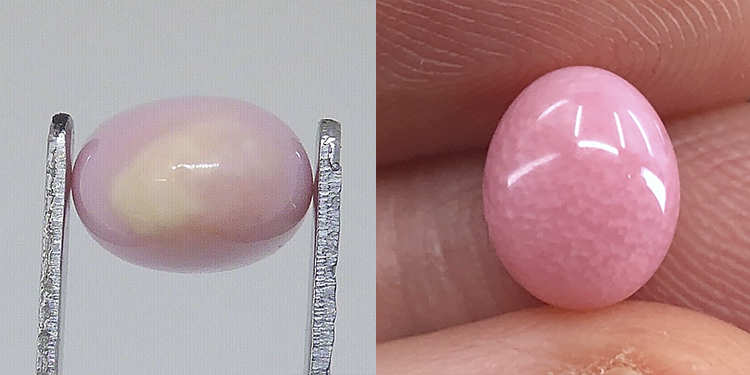
You should ensure that you carefully handle your conch pearls and not subject them to harmful chemicals or severe temperatures.
Keep Away From Chemicals

Conch pearls are delicate to chemicals, including those found in cosmetics, hairspray, and home cleaners. These compounds can harm the surface of your conch pearls, so never spray or apply them close to your pearls.
Clean on a Regular Basis
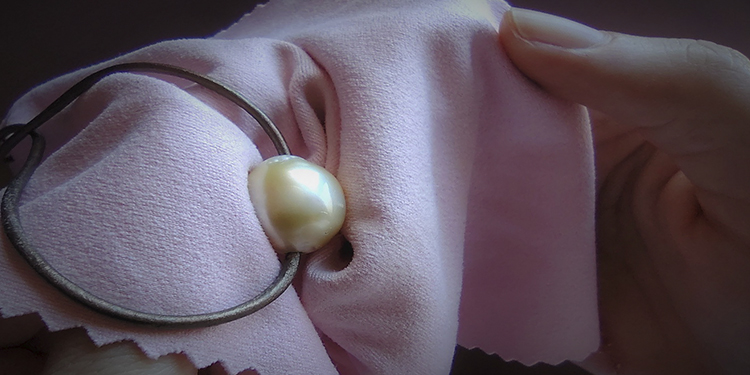
After donning your conch pearls, wipe them carefully with a soft, moist towel to remove any debris, perspiration, or grease formed on the surface. You must avoid any cleaning agents containing strong chemicals as they might harm the surface of the pearl.
Store Appropriately
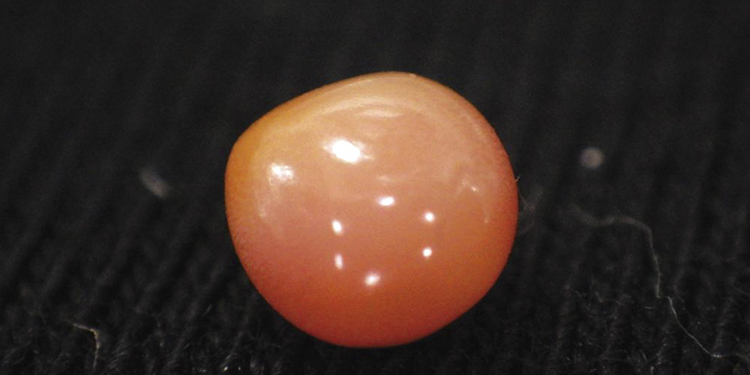
To avoid scuffs or damage, you should keep conch pearls separate from other jewelry in a padded box or soft pouch. Keep them out of humid environments and direct sunlight.
Professional Cleaning
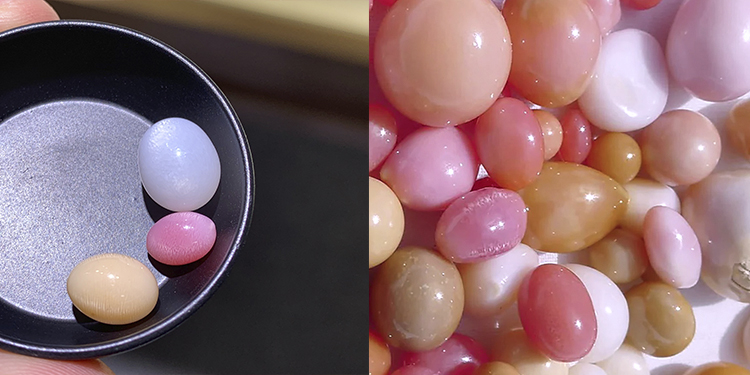
It is best that you take your conch pearls to a gemologist or qualified jeweler who can thoroughly clean them using specific tools and methods if they get extraordinarily unclean or need more extensive cleaning.
Conclusion
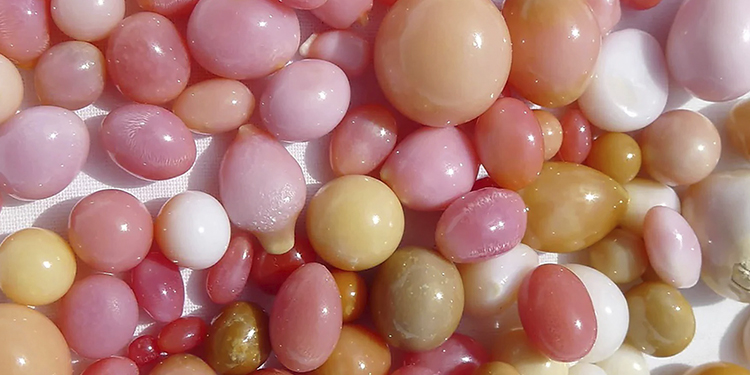
Conch pearls are a priceless and magnificent gemstone that has drawn the interest of investors, collectors, and jewelry aficionados alike. Because of their rarity, great value, and high demand, they are a preferred option for investment prospects and high-end jewelry designs. Furthermore, these pearls must be properly maintained and cared for to maintain their delicate beauty. Still, with the appropriate handling and care, future generations can appreciate them.


Leave a Comment